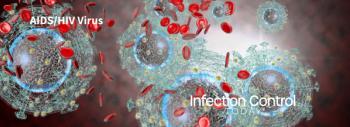
Herpes Offers Big Insights on Coughing and Potential New Remedies
Cough treatments could change dramatically after the herpes virus helped researchers discover that the respiratory tract links to two different parts of the nervous system. A research team led by the University of Queensland's Dr. Stuart Mazzone made the important breakthrough after setting out to learn more about the triggers behind excessive coughing.
"Different physical sensations arise from the upper and lower respiratory tracts in people with respiratory diseases," said Dr Mazzone, from the School of Biomedical Sciences. "The irritating sensations from the upper respiratory tract are a major driver of excessive coughing. Cough hypersensitivity is a debilitating symptom of more than 100 respiratory diseases, yet cough-suppressing treatments generally don't work."
Team member Dr. Alice McGovern said the research team co-opted a specific strain of herpes virus, because of its ability to travel through the nervous system. "Tracking this virus allowed us to understand the mechanisms behind the different respiratory sensations," McGovern says. "It provided detailed information about nerve circuits in the upper airway region where ticklish and irritated throat sensations arise. By adding a fluorescent protein to the virus we were able to trace its movement from the respiratory system to the higher brain centres that encode sensations."
Using this novel technology, developed by McGovern, the researchers discovered a fundamental difference between sensory neural pathways arising from the upper airways and those from the lungs, where such sensations are more difficult to distinguish.
"Previously it was assumed that the two respiratory circuits' nervous systems were identical," Mazzone says. "The fluorescent viral tracings show they are in fact quite different. The tracings revealed the upper airway region of the throat had heavy inputs of sensory neurons into a branch of the nervous system that enables very precise sensations to be felt. From the lower pulmonary lung area however, the sensory neurons project into a different branch of the nervous system that controls general emotions and feelings. This seems to account for the difference between precise sensations, such as the itchy feeling in the throat that evokes coughing, and the more generalised sensations felt in the lower lung region during respiratory illness."
Mazzone says important treatment implications would flow from the new understanding that there were two types of nervous systems in the respiratory circuit.
"Treatment for relief of upper airway inflammation that leads to cough hypersensitivity will need a different approach to lower airway discomfort because the processes in the neural components are not the same," he says."We know from our other studies that specific brain regions appear to be activated by the excessive upper airways sensory neuron activity. The next stage of our research will be to try to identify new therapies for cough hypersensitivity, which can either supress the sensory neurons themselves or combat the excessive brain activity they produce."
Source: University of Queensland
Newsletter
Stay prepared and protected with Infection Control Today's newsletter, delivering essential updates, best practices, and expert insights for infection preventionists.






